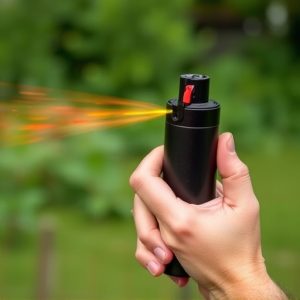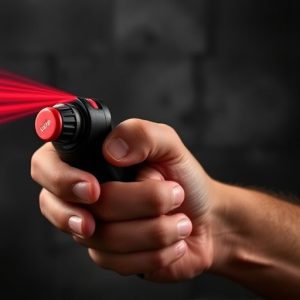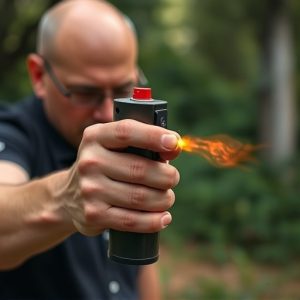Pepper Spray for Civilians: Composition, Legalities, and Application Tips
TL;DR: Pepper spray, a civilian protection tool using capsaicin from chili peppers, requires underst…….
TL;DR: Pepper spray, a civilian protection tool using capsaicin from chili peppers, requires understanding legal regulations and immediate care after exposure. Victims should wash affected areas, seek fresh air, keep hydrated, and get medical attention for severe cases or respiratory distress. Proper application involves assessing surroundings, maintaining distance, aiming at the attacker's face, and activating with swift movements. Always follow local laws and ensure immediate post-exposure care to exercise self-defense responsibly.
In an era where personal safety is paramount, understanding and accessing effective civilian protection tools like inflammatory spray (also known as pepper spray) has become essential. This article delves into the world of pepper spray, exploring its composition, immediate care techniques, and legal considerations to empower individuals with knowledge for optimal protection. By the end, readers will grasp the significance of learning proper application methods for this powerful self-defense tool, ensuring they’re prepared for any unexpected situation.
- Understanding Pepper Spray: Its Composition and Effects
- Legal Considerations and Civilian Access to Pepper Spray
- Effective Application Techniques for Optimal Protection
Understanding Pepper Spray: Its Composition and Effects
Pepper spray, a popular civilian protection tool, is a versatile and effective self-defense mechanism. Its active ingredient, capsaicin, is derived from chili peppers and is known for its irritant properties. When deployed, pepper spray creates an immediate barrier by causing temporary blindness, coughing, and difficulty breathing in the target. This temporary incapacitation allows users to escape potentially dangerous situations.
The composition of pepper spray varies among brands but typically includes a high-concentration solution of capsaicin oil, along with other additives designed to enhance its effectiveness and ease of use. Immediate care after exposure is crucial; affected individuals should wash their face, eyes, and skin with soap and water, seek fresh air, and keep the affected area hydrated. Medical attention may be required in severe cases to address potential respiratory or eye irritation.
Legal Considerations and Civilian Access to Pepper Spray
In many jurisdictions, civilian access to pepper spray is regulated to ensure public safety and responsible use. While some regions permit individuals to carry pepper spray for self-defense, strict laws govern its acquisition, possession, and application. It’s crucial for civilians considering pepper spray as a protective measure to understand these legal considerations. Unlawful possession or misuse can result in severe penalties, including fines and imprisonment.
Before acquiring pepper spray, individuals should familiarize themselves with local regulations regarding purchase age limits, required training or licensing, and permitted use scenarios. Immediate care after exposure to pepper spray is also vital. Victims of pepper spray attacks should seek medical attention promptly, as it can cause respiratory distress, skin irritation, and other adverse effects. Understanding both the legal framework and necessary precautions for immediate care ensures that civilians can exercise their right to self-defense while adhering to the law.
Effective Application Techniques for Optimal Protection
When applying an inflammatory spray for civilian protection, understanding effective application techniques is key to achieving optimal protection. Start by assessing your surroundings and identifying potential threats. Maintain a safe distance and ensure line-of-sight access to the target. Hold the spray can at close range, approximately 2–3 feet away, and aim directly at the attacker’s face. Activate the spray with swift, decisive movements, releasing a burst of liquid for maximum impact.
For immediate care after exposure to pepper spray, it’s crucial to act quickly. Remove any clothing or accessories that may retain the spray residue, being mindful not to rub or wipe the affected area, as this can spread the irritants further. Flush the eyes and face with clean water for at least 15 minutes. If breathing is difficult, move to an area with fresh air and seek medical attention if symptoms persist.
Pepper spray, a powerful tool for personal protection, offers civilians an effective means of deterring potential threats. By understanding its composition, legal framework, and proper application techniques, individuals can gain valuable knowledge for immediate care in challenging situations. With the right preparation and awareness, responsible pepper spray use empowers folks to protect themselves while navigating potentially dangerous scenarios.


